The Louvre Museum in Paris is one of the most famous museums in the world. It is home to many incredible artworks, including the Mona Lisa and the Venus de Milo. But is it really worth visiting? In this article, we will explore what makes the Louvre special, what you can see there, and some tips for making the most of your visit. Whether you are an art lover or just curious, this guide will help you decide if the Louvre is a must-see destination.
Recommended:
Best Ways To Get from Charles De Gaulle to Eiffel Tower
Why Should You Visit the Arc de Triomphe?
Where to Buy Cheap Designer Bags in Paris?
What to See At the Louvre In 2-3 Hours?
Introduction to the Louvre Museum
The Louvre Museum, originally a fortress built in 1190 by King Philippe Augustus, was transformed into a royal palace in the 16th century. It became a public museum during the French Revolution in 1793. Today, it houses over 38,000 works of art, including masterpieces like the Mona Lisa, Venus de Milo, and Winged Victory of Samothrace. The Louvre is not only a symbol of French culture and history but also one of the most visited museums in the world.
The Louvre Museum is located in the 1st arrondissement of Paris, adjacent to the Tuileries Gardens. It is easily accessible by public transportation, with the nearest Métro stations being Palais Royal-Musée du Louvre (Lines 1 and 7) and Pyramides (Line 14). Visitors can also reach the museum by bus, car, or bicycle. The museum offers priority access and free entry for disabled visitors and their companions.
The Louvre’s architecture is a blend of historical grandeur and contemporary innovation. The original medieval fortress remnants are still visible in the basement. Over the centuries, the Louvre has been expanded and redesigned by various architects, including Pierre Lescot, who added Renaissance elements in the 16th century. The most iconic feature is the glass pyramid entrance designed by I.M. Pei, which was added in the 1980s. This modern addition contrasts beautifully with the historic palace, creating a unique architectural experience.
Is the Louvre Museum Worth Visiting?
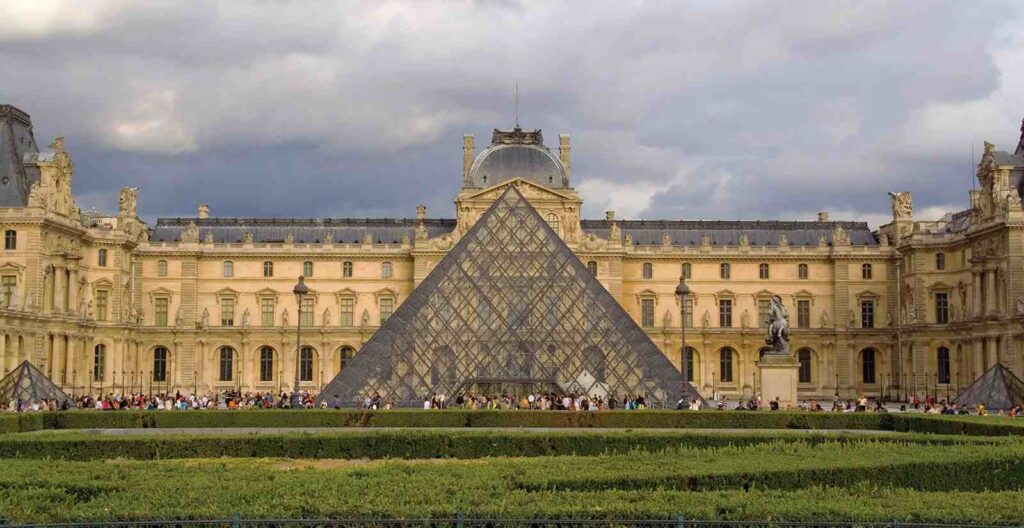
Absolutely, the Louvre Museum is worth visiting! As the largest art museum in the world, it houses an impressive collection of over 38,000 works of art, spanning from ancient civilizations to the 19th century. The museum is home to some of the most famous masterpieces, including Leonardo da Vinci’s Mona Lisa, the Venus de Milo, and the Winged Victory of Samothrace. These iconic pieces alone make the Louvre a must-see destination for art enthusiasts and casual visitors alike.
Beyond its extensive art collection, the Louvre itself is a historical marvel. Originally built as a fortress in the late 12th century, the remnants of its past can still be seen in the basement area. The building was later transformed into a royal palace before becoming the museum we know today. This rich history adds another layer of intrigue to your visit, allowing you to explore the evolution of French architecture and culture.
Even if you’re not an art lover, the Louvre offers something for everyone. The museum’s diverse collection includes ancient artifacts from Egypt and Mesopotamia, sculptures by Michelangelo, and paintings by renowned artists from various periods. The iconic glass pyramid at the entrance is also a popular spot for photos, making your visit a memorable experience.
In summary, the Louvre Museum is a treasure trove of art and history that should not be missed when visiting Paris. Whether you’re an art aficionado or simply looking to explore one of the world’s most famous museums, the Louvre offers a unique and enriching experience that is well worth your time.
Most Famous Art in the Louvre Known For
The Louvre Museum is home to some of the most famous and celebrated artworks in the world. Here are a few of the most iconic pieces and what they are known for:
1. Mona Lisa
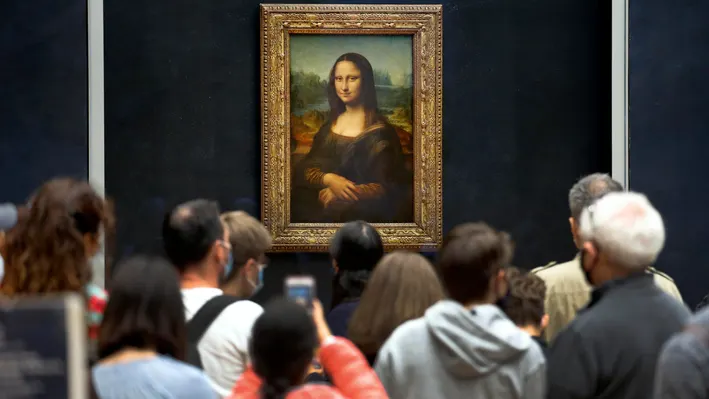
Leonardo da Vinci’s Mona Lisa is arguably the most famous painting in the world. Known for her enigmatic smile and mysterious expression, this portrait has captivated audiences for centuries. The painting’s fame is also due to its theft in 1911, which brought it unprecedented attention.
2. Venus de Milo
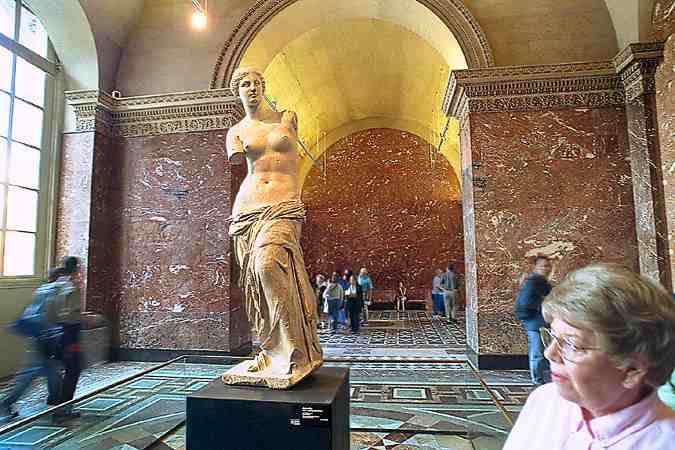
The Venus de Milo is an ancient Greek statue that represents the goddess Aphrodite. Discovered on the island of Milos, this sculpture is renowned for its beauty and the mystery surrounding its missing arms. It is a prime example of classical Greek art.
3. Winged Victory of Samothrace
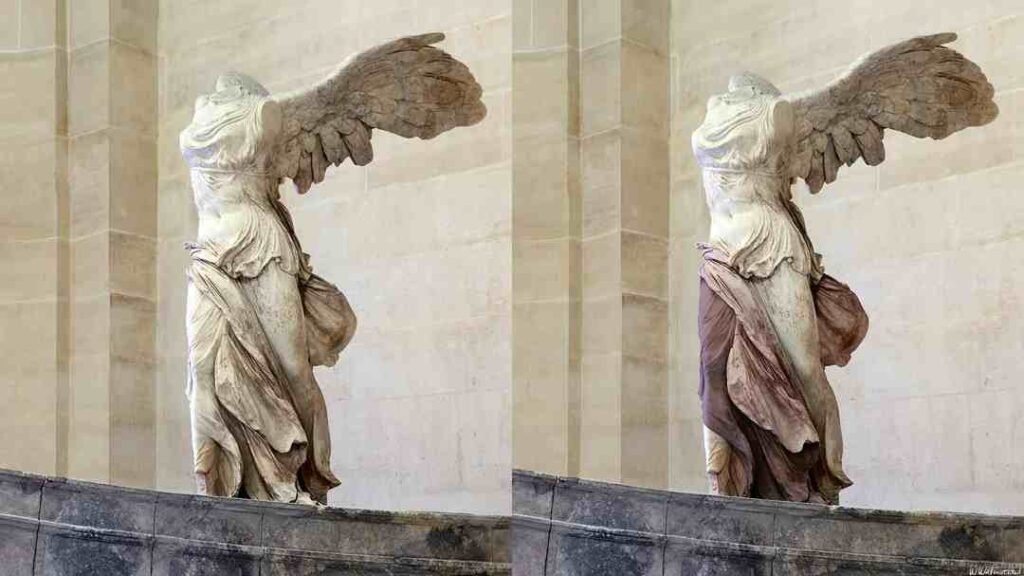
This Hellenistic sculpture, also known as Nike of Samothrace, depicts the Greek goddess of victory. The statue is celebrated for its dynamic form and the sense of movement it conveys. It is considered one of the greatest masterpieces of Hellenistic art.
4. Liberty Leading the People

Eugène Delacroix’s Liberty Leading the People is a powerful painting that commemorates the July Revolution of 1830 in France. The painting depicts Liberty as a woman leading a diverse group of people forward, symbolizing the fight for freedom and democracy.
5. The Raft of the Medusa
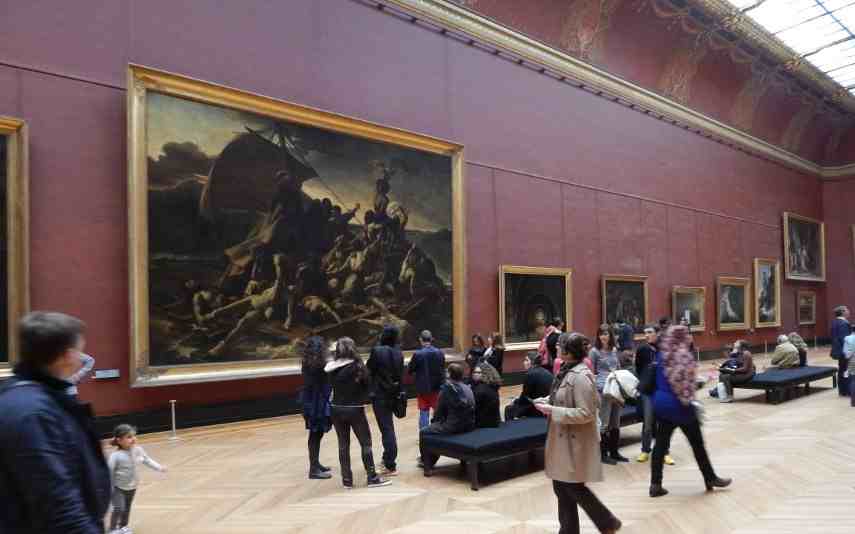
Théodore Géricault’s The Raft of the Medusa is a dramatic and emotional painting that portrays the aftermath of a shipwreck. The painting is known for its raw depiction of human suffering and its critique of the French government at the time.
6. The Coronation of Napoleon
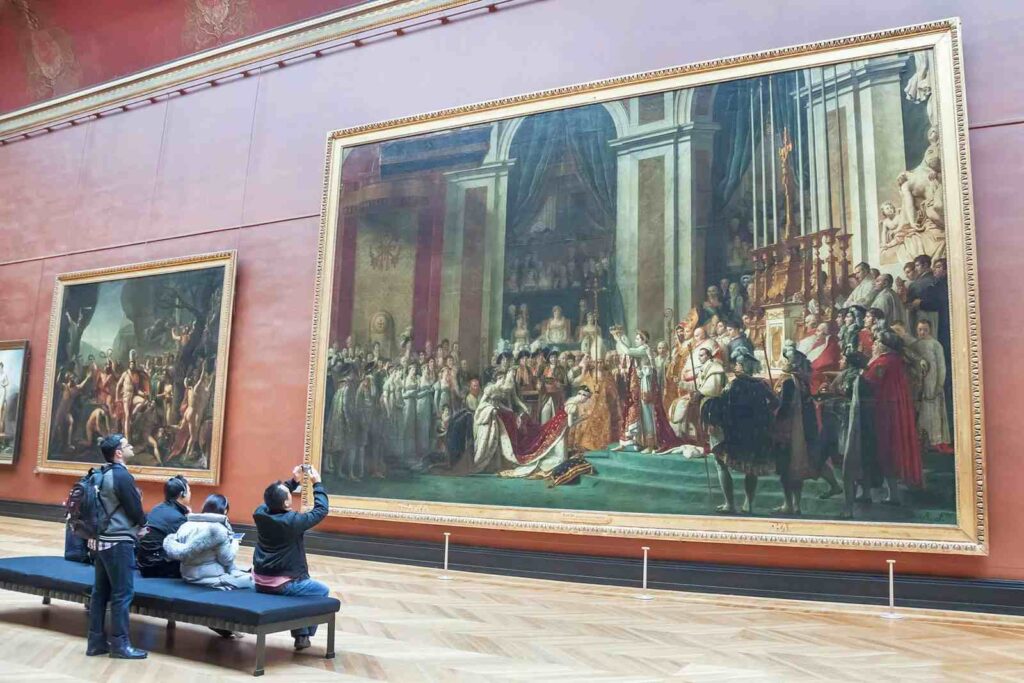
Painted by Jacques-Louis David, The Coronation of Napoleon captures the moment when Napoleon crowned himself Emperor of the French. This grand painting is notable for its detailed depiction of the event and the figures involved.
7. The Death of the Virgin
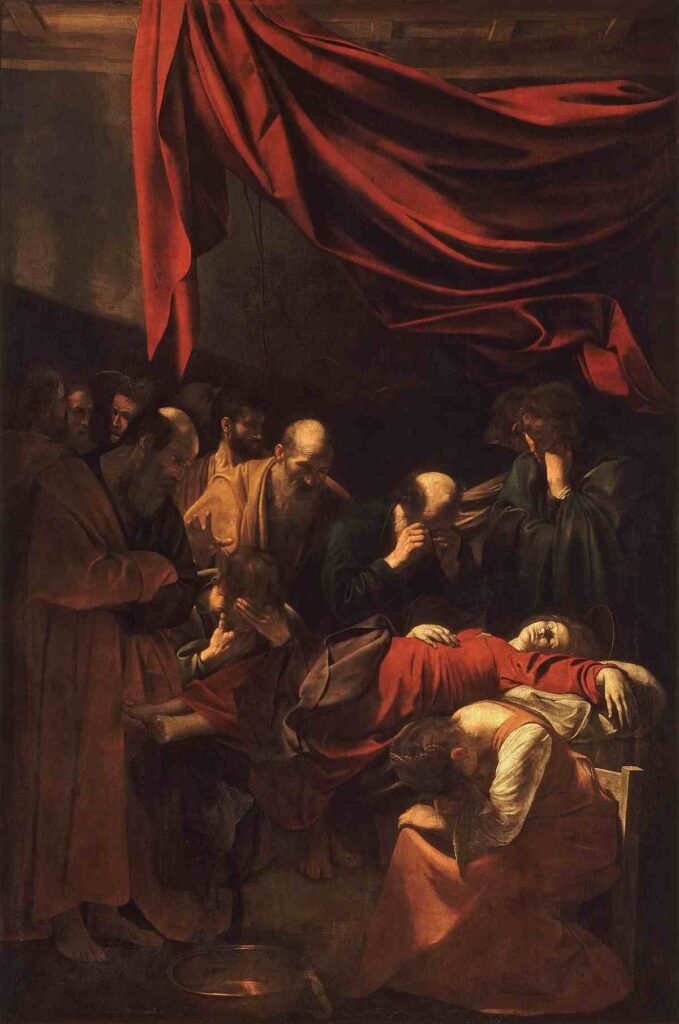
Caravaggio’s The Death of the Virgin is a striking example of the artist’s use of realism and dramatic lighting. The painting depicts the Virgin Mary on her deathbed, surrounded by mourners. It is known for its emotional intensity and lifelike portrayal.
These masterpieces are just a few examples of the incredible art that can be found at the Louvre. Each piece has its own unique story and significance, making the museum a treasure trove of cultural and artistic heritage.
Practical Tips for Visitors
Visiting the Louvre Museum is an enriching and memorable experience. Here’s what you can expect:
- Best Times to Visit: To avoid the crowds, try to visit early in the morning or later in the afternoon. Wednesdays and Fridays offer extended hours, allowing for a more relaxed visit. Weekdays are generally less crowded than weekends.
- Choose the Right Entrance: The main entrance through the glass pyramid can get very crowded. Consider using alternative entrances like the Carrousel du Louvre or the Porte des Lions to save time.
- What to Bring and What to Leave Behind: Bring a small bag with essentials like water, a camera, and a guidebook. Large bags and backpacks are not allowed inside the museum, so it’s best to leave them at your hotel or use the museum’s cloakroom. Comfortable walking shoes are a must, as you’ll be on your feet for several hours.
- Navigating the Museum: The Louvre is vast, with over 35,000 works of art spread across 400 rooms. It’s a good idea to prioritize the artwork you want to see and plan your route accordingly. Maps are available at the information desks, and the museum’s app can help you navigate and learn more about the exhibits.
- Guided Tours vs. Self-Guided Tours: Consider joining a guided tour for in-depth insights into the museum’s collections and history. Alternatively, you can rent an audio guide or use the museum’s app for a self-guided tour. Both options provide valuable information and enhance your experience.
- Accessibility: The Louvre is committed to making the museum accessible to all visitors. There are dedicated services for visitors with physical disabilities, including wheelchairs, folding chairs, and canes with rubber tips. The museum staff is available to assist visitors with special needs, ensuring a comfortable and enjoyable experience.
- Nearby Attractions and Dining Options: After exploring the Louvre, take a leisurely stroll through the adjacent Tuileries Gardens or visit nearby attractions like the Musée d’Orsay and the Palais Royal. There are numerous dining options in the vicinity, ranging from casual cafes to fine dining restaurants.
- Tips for Families with Children: The Louvre is a family-friendly destination, offering free admission to children under 18 and residents of the European Economic Area under 26. The museum provides special activities and workshops designed for children, making it an educational and enjoyable experience for the whole family.
In summary, the Louvre Museum offers a well-rounded visitor experience with its rich collections, accessible facilities, and convenient amenities.
How Long Do You Need For the Louvre?
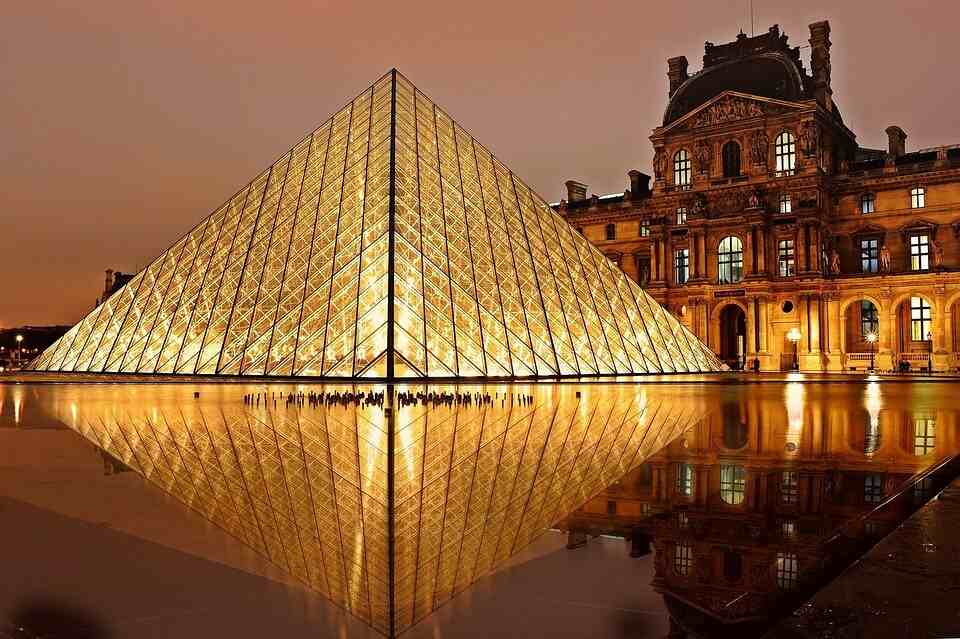
The amount of time you need to explore the Louvre largely depends on your interests and how deeply you want to delve into its vast collections. If you are a casual visitor looking to see the highlights, such as the Mona Lisa, Venus de Milo, and Winged Victory of Samothrace, a visit of around 2 to 3 hours can give you a good overview.
However, if you are an art enthusiast or a history buff, you might want to spend more time exploring the various wings and lesser-known pieces. In this case, dedicating a full day or even multiple visits would be more appropriate. The museum is so extensive that even spending a minute on each artwork would take you several days to see everything.
For a more relaxed experience, consider breaking your visit into two parts: spend a few hours in the morning, take a break to enjoy the beautiful surroundings of the museum, and then return in the afternoon or evening. The Louvre is open late on Wednesdays and Fridays, which can be a great time to visit with fewer crowds.
Cultural Significance
The Louvre Museum in Paris is one of the most influential art institutions in the world. Its impact on global art and culture is profound and multifaceted:
Influence on Global Art and Culture
- Cultural Ambassador: The Louvre acts as a global ambassador for art and culture, promoting international recognition and understanding. It houses over 38,000 works of art, including iconic pieces like the Mona Lisa, Venus de Milo, and the Great Sphinx of Tanis.
- Diverse Collections: The museum’s collections span various cultures and time periods, from ancient Egypt to the Italian Renaissance and beyond. This diversity allows visitors to experience a wide range of artistic traditions and historical contexts.
- Educational Role: The Louvre plays a significant educational role, offering a chronological journey through the development of art. This helps visitors understand the evolution of artistic styles and techniques.
- Global Collaborations: The Louvre collaborates with other major museums worldwide, fostering cultural exchange and sharing knowledge. For example, its partnership with the Museo di Capodimonte in 2023 showcased masterpieces from both collections.
Notable Temporary Exhibitions
The Louvre regularly hosts temporary exhibitions that attract global attention. Some notable ones include:
- Naples in Paris: The Louvre Hosts the Museo di Capodimonte (2023): This exhibition featured approximately sixty major masterpieces from the Capodimonte collection, highlighting the importance of collaborative efforts among European museums.
- The Treasury of Notre Dame Cathedral (2023): This exhibition explored the history and significance of the Notre Dame Cathedral’s treasures, from their origins to the restoration efforts after the 2019 fire.
- Yves Saint-Laurent at the Museums (2022): This exhibition celebrated the work of the legendary fashion designer Yves Saint-Laurent, showcasing his creations alongside artworks that inspired him.
- Olympism: Modern Invention, Ancient Legacy (2024): This exhibition examined the history and cultural impact of the Olympic Games, from their ancient origins to their modern revival.
The Louvre’s influence extends far beyond its walls, shaping the global art scene and enriching cultural understanding worldwide.
Should I Do a Guided Tour of the Louvre or Explore by Myself?
Deciding whether to take a guided tour of the Louvre or explore it on your own depends on your preferences and what you hope to get out of your visit.
Guided Tours: Guided tours can be incredibly informative, especially if it’s your first time visiting the Louvre. An expert guide can provide context, historical background, and interesting anecdotes about the artworks and the museum itself. This can enhance your understanding and appreciation of the pieces you see. Additionally, guided tours can help you navigate the vast museum efficiently, ensuring you see the most famous pieces without getting lost. If you have limited time, a guided tour can help you make the most of your visit by focusing on the highlights.
Self-Guided Exploration: On the other hand, exploring the Louvre on your own allows for greater flexibility. You can go at your own pace and spend more time on the pieces that interest you the most. The Louvre offers thematic trails and audio guides that can help you navigate and learn about the artworks independently. This option is ideal if you prefer a more personalized experience and want to tailor your visit to your specific interests.
Ticket Options for the Louvre
When planning a visit to the Louvre, there are several ticket options to consider:
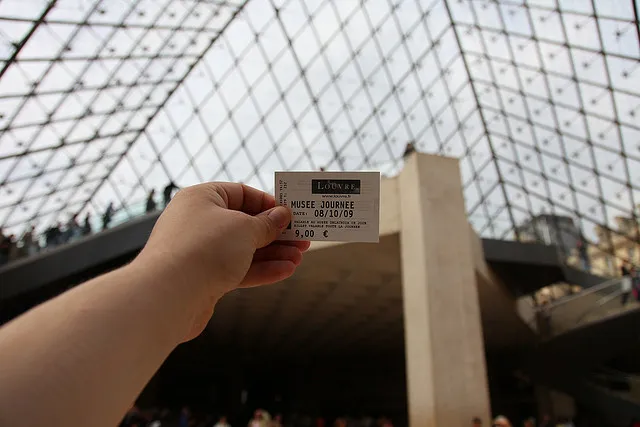
1. General Admission: This ticket grants access to the permanent collections and temporary exhibitions of the Louvre, as well as the Eugène-Delacroix National Museum on the same day and the day after your Louvre visit. The cost is €22 per adult.
2. Free Admission: Certain visitors are eligible for free admission, including:
- Under 18s (proof of ID required)
- 18-25 year-old residents of the European Economic Area (proof of ID and residency required)
- Disabled visitors and their accompanying person
- Art teachers, artists affiliated with the AIAP, ICOM and ICOMOS members, journalists, job seekers, and people on income support (proof of entitlement required).
3. First Friday of the Month: The Louvre offers free admission for all visitors on the first Friday of the month after 6 p.m. (except in July and August) and on July 14th.
4. Guided Tours and Workshops: For a more in-depth experience, you can book guided tours, storytime sessions, and workshops. These options often include the general admission ticket and cost around €31.
5. Audio Guides: If you prefer a self-guided tour, you can rent an audio guide for an additional €6.
6. Paris Museum Pass: This pass provides access to multiple museums and monuments in Paris, including the Louvre. It’s a great option if you plan to visit several attractions during your stay.
Each of these options offers different benefits, so consider what aligns best with your interests and schedule. Whether you choose a general admission ticket, take advantage of free admission days, or opt for a guided tour, the Louvre promises a rich and rewarding experience.
How to Enter in the Louvre Museum
Entering the Louvre can be a smooth experience if you know the different entrances and what to expect. Here are the main ways to enter the museum:
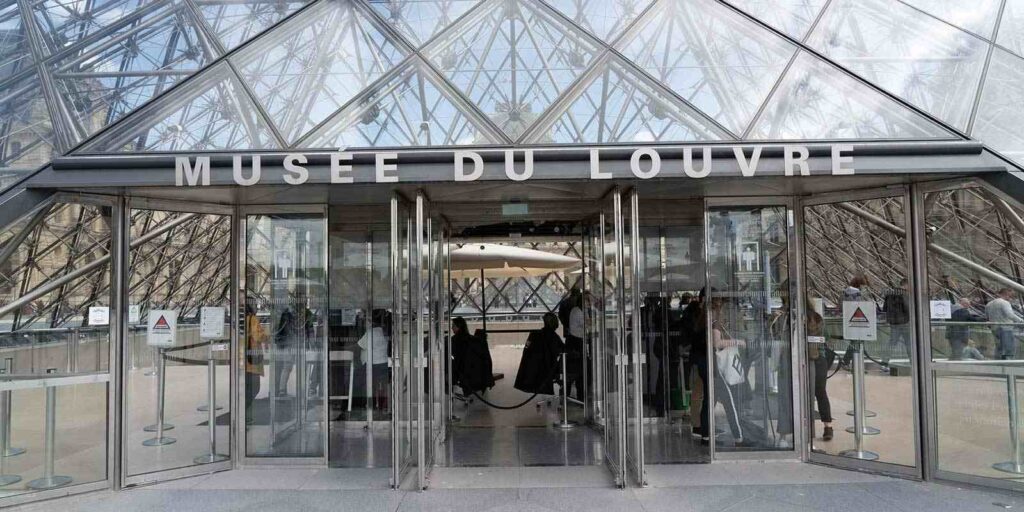
1. The Pyramid Entrance: This is the main entrance and the most iconic one, located in the central courtyard. It has four queues: visitors without tickets, visitors with tickets, visitors with membership cards, and priority access for disabled visitors and staff members. This entrance can get quite busy, especially during peak times.
2. The Carrousel Entrance: Located at 99 Rue de Rivoli, this entrance is underground and can be accessed via the Carrousel du Louvre shopping mall. It’s a great option to avoid the long lines at the Pyramid entrance.
3. The Richelieu Entrance: This entrance is reserved for groups and visitors with membership cards. It’s located on Rue de Rivoli and can be a quicker way to enter if you fall into one of these categories.
4. The Porte des Lions Entrance: This entrance is less known and can be a good option to avoid crowds. It’s located near the Seine River and is often used for special exhibitions.
Tips for a Smooth Entry:
- Book Tickets in Advance: To save time, book your tickets online and choose a time slot for your visit. This can help you skip the long lines at the entrance.
- Arrive Early or Late: Visiting early in the morning or late in the afternoon can help you avoid the busiest times.
- Use Public Transport: The Louvre is easily accessible by metro (Palais-Royal/Musée du Louvre station on lines 1 and 7) and several bus lines.
By planning ahead and choosing the right entrance, you can make your visit to the Louvre more enjoyable and efficient.
FAQs
Q 1. What are the opening hours of the Louvre?
Ans. The Louvre is open from 9 AM to 6 PM on Monday, Thursday, Saturday, and Sunday. On Wednesdays and Fridays, it stays open until 9 PM. The museum is closed on Tuesdays and certain public holidays.
Q 2. Are there any special exhibitions currently on display?
Ans. The Louvre regularly hosts special exhibitions. You can check the latest exhibitions and events on the Louvre’s official website.
Q 3. Is there a dress code for visiting the Louvre?
Ans. There is no formal dress code for visiting the Louvre. However, visitors are expected to dress appropriately. Inappropriate clothing such as swimsuits is not allowed, and footwear is required.
Q 4. Can I bring a backpack or a large bag into the museum?
Ans. Large bags and suitcases are not allowed in the museum. Small bags and backpacks measuring up to 55cm x 35cm x 20cm are permitted. Lockers are available for storing smaller items.
Q 5. Are there dining options available inside the Louvre?
Ans. Yes, the Louvre offers a variety of dining options, including cafes, restaurants, and takeaway counters. Some popular choices include Café Richelieu Angelina, Café Mollien, and Le Café Marly.
Q 6. Is photography allowed inside the museum?
Ans. Photography is allowed in the permanent collections for personal use, but the use of selfie sticks, flash, or lighting is prohibited. In some temporary exhibitions, photography may not be allowed.
Q 7. Are there any family-friendly activities or tours available?
Ans. The Louvre offers several family-friendly activities, including workshops, guided tours, storytelling sessions, and free activities in the Studio. These activities are designed to make the museum experience enjoyable for children and families.
Q 8. What accessibility options are available for disabled visitors?
Ans. The Louvre provides various accessibility options, including free admission for disabled visitors and their accompanying person, priority access, wheelchairs, folding chairs, and accessible restrooms. The museum also offers themed tours designed for optimal comfort.
Q 9. Can I re-enter the museum on the same day with my ticket?
Ans. No, once you exit the museum, your entrance ticket is not valid for re-entry. Therefore, it’s advisable to plan your visit accordingly.
Q 10. Are there any nearby attractions to visit after the Louvre?
Ans. Yes, there are several attractions near the Louvre, including the Tuileries Garden, the Musée d’Orsay, the Pont des Arts, and the Palais-Royal. These sites offer additional cultural and historical experiences within walking distance of the museum.
Conclusion
In conclusion, the Louvre Museum is more than just a place to see famous art—it’s a journey through history, culture, and human creativity. Whether you’re an art lover or just curious, the Louvre offers something special for everyone. Yes, it can be crowded, and there are challenges, but the experience of standing in front of masterpieces like the Mona Lisa or exploring the beautiful palace is worth it. Visiting the Louvre is not just about seeing art; it’s about feeling the connection to centuries of culture and history. So, if you have the chance, the Louvre is definitely worth a visit.

Welcome to my Paris travel blog! I’m Shubham, a passionate traveler, foodie, and culture enthusiast with a deep love for the City of Lights. Over the years, I’ve explored every corner of Paris, uncovering its hidden gems, iconic landmarks, and culinary delights. Through this blog, I aim to share insider tips, detailed guides, and personal stories to help you experience Paris like a true local.



